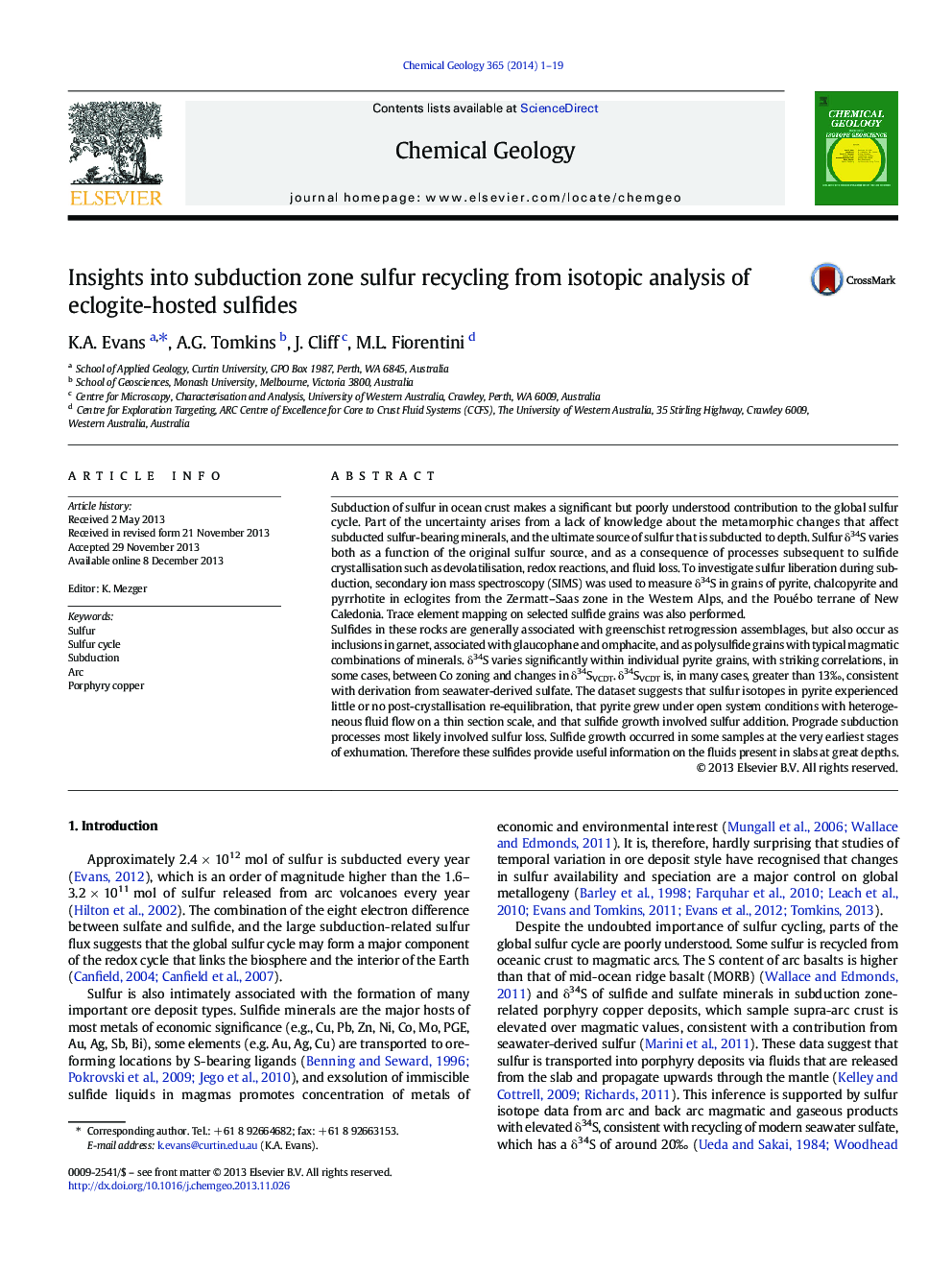| کد مقاله | کد نشریه | سال انتشار | مقاله انگلیسی | نسخه تمام متن |
|---|---|---|---|---|
| 6436730 | 1637605 | 2014 | 19 صفحه PDF | دانلود رایگان |
- Sulfur isotopes in subducted rocks indicate a seawater sulfate contribution.
- Cyclic coupled Co and S isotope zoning indicates open system sulfide growth.
- Sulfur contents indicate an increase of sulfur over likely pre-subduction values.
Subduction of sulfur in ocean crust makes a significant but poorly understood contribution to the global sulfur cycle. Part of the uncertainty arises from a lack of knowledge about the metamorphic changes that affect subducted sulfur-bearing minerals, and the ultimate source of sulfur that is subducted to depth. Sulfur δ34S varies both as a function of the original sulfur source, and as a consequence of processes subsequent to sulfide crystallisation such as devolatilisation, redox reactions, and fluid loss. To investigate sulfur liberation during subduction, secondary ion mass spectroscopy (SIMS) was used to measure δ34S in grains of pyrite, chalcopyrite and pyrrhotite in eclogites from the Zermatt-Saas zone in the Western Alps, and the Pouébo terrane of New Caledonia. Trace element mapping on selected sulfide grains was also performed.Sulfides in these rocks are generally associated with greenschist retrogression assemblages, but also occur as inclusions in garnet, associated with glaucophane and omphacite, and as polysulfide grains with typical magmatic combinations of minerals. δ34S varies significantly within individual pyrite grains, with striking correlations, in some cases, between Co zoning and changes in δ34SVCDT. δ34SVCDT is, in many cases, greater than 13â°, consistent with derivation from seawater-derived sulfate. The dataset suggests that sulfur isotopes in pyrite experienced little or no post-crystallisation re-equilibration, that pyrite grew under open system conditions with heterogeneous fluid flow on a thin section scale, and that sulfide growth involved sulfur addition. Prograde subduction processes most likely involved sulfur loss. Sulfide growth occurred in some samples at the very earliest stages of exhumation. Therefore these sulfides provide useful information on the fluids present in slabs at great depths.
Journal: Chemical Geology - Volume 365, 4 February 2014, Pages 1-19
